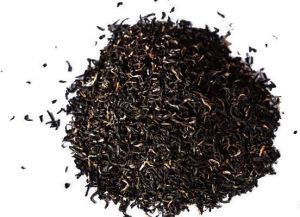
TGFOP1-2 Orthodox Tea
100 Kilogram (MOQ)
Orthodox Tea Orthodox tea refers to the tea which is made or processed using traditional methods. Orthodox teas are generally bright and brisk and have a multilayered flavor profile. Orthodox Tea is produced using the traditional methods of Tea production which includes plucking, withering , rolling, oxidation and drying. Orthodox teas are carefully rolled or shaped into various sizes and styles depending on the type of tea being produced. Orthodox processing is used to produce various styles of loose leaf tea, including white, green, oolong and black Benefits of Orthodox Tea It is high in Antioxidants as compared to CTC which loses its antioxidant quality comparatively due to machine processing. Antioxidants help to neutralize damaged cells which help us to look and feel better. Helps prevent Cardiovascular Disease. Loose leaf tea has been shown to have a calming effect on the body and especially helps boost mental clarity. Loose leaf teas retain the Authentic Taste and are comparatively more rich in flavor and color. Loose leaf teas are organically processed thus giving it an advantage over the other in terms of quality. Typical tea bags are produced on an industrial scale and may sit in a warehouse or on a shelf for a long time before you ever get them. These low-grade leaves are usually picked, processed, and packaged by machines overseas.In contrast, our premium teas are carefully hand-selected and crafted by tea masters. EXTENSIONS The varieties of tea specified in the brochure are the major varieties demanded and exported by us globally. However, there are many other varieties too which are at times demanded and we fulfill such requirements too. We are a leading supplier and trader in the salt industry of India both in edible and industrial segments. WHITE LABELING A white-label product is a product or service produced by one company that other companies rebrand to make it appear as if they had made it. The name derives from the image of a white label on the packaging that can be filled in with the marketer's trade dress. We can also fulfill any White Labeling requirements of yours in any varieties of tea or in any of my pre-existing brand(s).
Cultivation Type : Natural
Color : Black
Form : Granules
Usage : Home, Office, Restaurant, Hotel
Grade Standard : TGFOP1-2
Packaging Type : Plastic Bag
Packaging Size : 25kg And 50kg
Type : Orthodox Tea
Country of Origin : India
Speaciality : Strong Aroma, Non Harmful, Nice Fragrance, Health Conscious, Delicious Taste
...more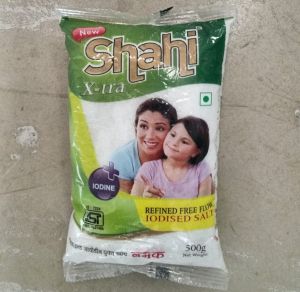
Shashi X-tra Iodised Salt
25 Metric Ton (MOQ)
In common usage, salt is a mineral composed primarily of Sodium Chloride (NaCl). Salt is one of the oldest and most ubiquitous food seasonings, and is known to uniformly improve the taste perception of food, including otherwise unpalatable food. Some of the earliest evidence of salt processing dates to around 6000 BC, when people living in the area of present-day Romania boiled Spring water to extract salts; a salt works in china dates to approximately the same period. Salt was also prized by the ancient Hebrews, Greeks, Romans, Byzantines, Hitties, Egyptians, and Indians. Salt became an important article of trade and was transported by boat across the Mediterranean sea, along specially built salt roads, and across the Sahara on camel caravn. The scarcity and universal need for salt have led nations to go to war over it and use it to raise tax revenues. Salt is used in religious ceremonies and has other cultural and traditional significance. SALT IN INDIA Though salt was considered as “God’s gift” in ancient times and used for diplomatic purposes, in modern days it has more than 14,000 uses. India occupies the third place in the production of salt by producing 8.9 per cent ofthe total world production being cultivated in 1.45 lakh hectares. Gujarat, Rajasthan and Tamilnadu are the top-3 states in which the yield and labour productivity were found high among the salt producing states in India. In 2013-14, 59.61 lakh MT of salt was exported which accounts for Rs.844.4 crore. In India, the historical records speak about the dominance of salt as a medium of exchange and much before the invasion of Alexander, the Great, around 327 BC, salt was extracted from the salt mines of the Northern India and transported to different parts of the country. Though it was a luxury commodity for the poor people in India, Mahatma Gandhi (12-03-1930) broke the salt policy of the British Government by a protest declaring that “with this, I am weakening the foundation of British empire”. After independence, ‘salt’ became a central subject, headed by the Salt Commissioner of India. As the time advanced, uses of salt increased and the method of producing salt has also undergone significant changes. In modern times salt has about 14000 known uses from food to industry to de-icing. Presently about 110 countries are actively engaged in the production of salt and India occupies a place of pride at third place India however produces one of the cheapest salts as it exports to the major top two producers like wise China ( By Sea) at around 2013-2014 with 27.44 MT Origins - GUJRAT - The largest Salt producer state in india with latest tech and easy deployment through various ports like Kandla and Mundra (for Sea) Certificates - Our company is export complainace as per Indian rules and regulation. Port of loading - Majorly Port used for exports are Kandla and Mundra of Gujrat Packaging Sizes Skuz- 1. For Free flow Iodized salts in our brands:- ● 1 kg Packets @25 kg bags Packaging ● ½ kg Packets @25 kg bags packaging ● 1 kg Packets @50 kg bags packaging ● ½ kg Packets @50 kg bags packaging 2. Any white labeling can be done in your brands or any readily available brands. 3. Any Industrial , edible , or any other uses of Salt in any form of packaging as per the customer requirements can be met. 4. Any type of salt and the required chemical composition of customer preference and choice can be met. 5. Any types of rock salt, black salts, pink salts, bath salts. Payment Terms :- Preferred payment terms are 1. Letter of credit 2. Cash In advance Price :- Price of the product depends on the requirements of the customer where the minimum order quantity is one 20ft container. Expiry Time According to Indian Laws iodised salt iodisation should be in the range of 15 ppm -30 ppm where we have to state the best before 24 months. Industrial Salts do not have any expiry time. Previous Exports We have been one of the largest exporters of Bhutan Via road where we have exported around 6400 mt. We have also exported industrial salt to Nepal via roads. We have also supplied to people who do exports in Bangladesh
Brand Name : Shashi X-tra
Color : Pink
Form : Powder
Application : Cooking
Variety : Refined
Feature : Added Preservatives, Long Functional Life, Low Sodium, Non Harmful
Packaging Type : Plastic Packets
Packaging Size : 1Kg
Type : Iodized Salt
Country of Origin : India
...more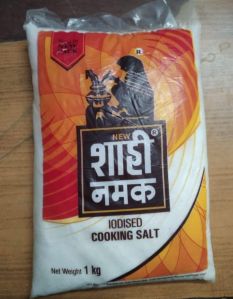
Shahi Iodised Cooking Salt
25 Metric Ton (MOQ)
In common usage, salt is a mineral composed primarily of Sodium Chloride (NaCl). Salt is one of the oldest and most ubiquitous food seasonings, and is known to uniformly improve the taste perception of food, including otherwise unpalatable food. Some of the earliest evidence of salt processing dates to around 6000 BC, when people living in the area of present-day Romania boiled Spring water to extract salts; a salt works in china dates to approximately the same period. Salt was also prized by the ancient Hebrews, Greeks, Romans, Byzantines, Hitties, Egyptians, and Indians. Salt became an important article of trade and was transported by boat across the Mediterranean sea, along specially built salt roads, and across the Sahara on camel caravn. The scarcity and universal need for salt have led nations to go to war over it and use it to raise tax revenues. Salt is used in religious ceremonies and has other cultural and traditional significance. SALT IN INDIA Though salt was considered as “God’s gift” in ancient times and used for diplomatic purposes, in modern days it has more than 14,000 uses. India occupies the third place in the production of salt by producing 8.9 per cent ofthe total world production being cultivated in 1.45 lakh hectares. Gujarat, Rajasthan and Tamilnadu are the top-3 states in which the yield and labour productivity were found high among the salt producing states in India. In 2013-14, 59.61 lakh MT of salt was exported which accounts for Rs.844.4 crore. In India, the historical records speak about the dominance of salt as a medium of exchange and much before the invasion of Alexander, the Great, around 327 BC, salt was extracted from the salt mines of the Northern India and transported to different parts of the country. Though it was a luxury commodity for the poor people in India, Mahatma Gandhi (12-03-1930) broke the salt policy of the British Government by a protest declaring that “with this, I am weakening the foundation of British empire”. After independence, ‘salt’ became a central subject, headed by the Salt Commissioner of India. As the time advanced, uses of salt increased and the method of producing salt has also undergone significant changes. In modern times salt has about 14000 known uses from food to industry to de-icing. Presently about 110 countries are actively engaged in the production of salt and India occupies a place of pride at third place India however produces one of the cheapest salts as it exports to the major top two producers like wise China ( By Sea) at around 2013-2014 with 27.44 MT Origins - GUJRAT - The largest Salt producer state in india with latest tech and easy deployment through various ports like Kandla and Mundra (for Sea) Certificates - Our company is export complainace as per Indian rules and regulation. Port of loading - Majorly Port used for exports are Kandla and Mundra of Gujrat Packaging Sizes Skuz- 1. For Free flow Iodized salts in our brands:- ● 1 kg Packets @25 kg bags Packaging ● ½ kg Packets @25 kg bags packaging ● 1 kg Packets @50 kg bags packaging ● ½ kg Packets @50 kg bags packaging 2. Any white labeling can be done in your brands or any readily available brands. 3. Any Industrial , edible , or any other uses of Salt in any form of packaging as per the customer requirements can be met. 4. Any type of salt and the required chemical composition of customer preference and choice can be met. 5. Any types of rock salt, black salts, pink salts, bath salts. Payment Terms :- Preferred payment terms are 1. Letter of credit 2. Cash In advance Price :- Price of the product depends on the requirements of the customer where the minimum order quantity is one 20ft container. Expiry Time According to Indian Laws iodised salt iodisation should be in the range of 15 ppm -30 ppm where we have to state the best before 24 months. Industrial Salts do not have any expiry time. Previous Exports We have been one of the largest exporters of Bhutan Via road where we have exported around 6400 mt. We have also exported industrial salt to Nepal via roads. We have also supplied to people who do exports in Bangladesh
Brand Name : Shahi
Color : White
Form : Powder
Application : Cooking
Variety : Refined
Purity : >99%
Feature : Added Preservatives, Long Functional Life, Low Sodium, Non Harmful
Packaging Type : Plastic Packets
Packaging Size : 1Kg
Type : Iodized Salt
Country of Origin : India
...more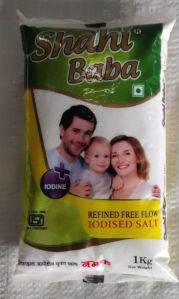
Shahi Baba Iodised Salt
25 Metric Ton (MOQ)
In common usage, salt is a mineral composed primarily of Sodium Chloride (NaCl). Salt is one of the oldest and most ubiquitous food seasonings, and is known to uniformly improve the taste perception of food, including otherwise unpalatable food. Some of the earliest evidence of salt processing dates to around 6000 BC, when people living in the area of present-day Romania boiled Spring water to extract salts; a salt works in china dates to approximately the same period. Salt was also prized by the ancient Hebrews, Greeks, Romans, Byzantines, Hitties, Egyptians, and Indians. Salt became an important article of trade and was transported by boat across the Mediterranean sea, along specially built salt roads, and across the Sahara on camel caravn. The scarcity and universal need for salt have led nations to go to war over it and use it to raise tax revenues. Salt is used in religious ceremonies and has other cultural and traditional significance. SALT IN INDIA Though salt was considered as “God’s gift” in ancient times and used for diplomatic purposes, in modern days it has more than 14,000 uses. India occupies the third place in the production of salt by producing 8.9 per cent ofthe total world production being cultivated in 1.45 lakh hectares. Gujarat, Rajasthan and Tamilnadu are the top-3 states in which the yield and labour productivity were found high among the salt producing states in India. In 2013-14, 59.61 lakh MT of salt was exported which accounts for Rs.844.4 crore. In India, the historical records speak about the dominance of salt as a medium of exchange and much before the invasion of Alexander, the Great, around 327 BC, salt was extracted from the salt mines of the Northern India and transported to different parts of the country. Though it was a luxury commodity for the poor people in India, Mahatma Gandhi (12-03-1930) broke the salt policy of the British Government by a protest declaring that “with this, I am weakening the foundation of British empire”. After independence, ‘salt’ became a central subject, headed by the Salt Commissioner of India. As the time advanced, uses of salt increased and the method of producing salt has also undergone significant changes. In modern times salt has about 14000 known uses from food to industry to de-icing. Presently about 110 countries are actively engaged in the production of salt and India occupies a place of pride at third place India however produces one of the cheapest salts as it exports to the major top two producers like wise China ( By Sea) at around 2013-2014 with 27.44 MT Origins - GUJRAT - The largest Salt producer state in india with latest tech and easy deployment through various ports like Kandla and Mundra (for Sea) Certificates - Our company is export complainace as per Indian rules and regulation. Port of loading - Majorly Port used for exports are Kandla and Mundra of Gujrat Packaging Sizes Skuz- 1. For Free flow Iodized salts in our brands:- ● 1 kg Packets @25 kg bags Packaging ● ½ kg Packets @25 kg bags packaging ● 1 kg Packets @50 kg bags packaging ● ½ kg Packets @50 kg bags packaging 2. Any white labeling can be done in your brands or any readily available brands. 3. Any Industrial , edible , or any other uses of Salt in any form of packaging as per the customer requirements can be met. 4. Any type of salt and the required chemical composition of customer preference and choice can be met. 5. Any types of rock salt, black salts, pink salts, bath salts. Payment Terms :- Preferred payment terms are 1. Letter of credit 2. Cash In advance Price :- Price of the product depends on the requirements of the customer where the minimum order quantity is one 20ft container. Expiry Time According to Indian Laws iodised salt iodisation should be in the range of 15 ppm -30 ppm where we have to state the best before 24 months. Industrial Salts do not have any expiry time. Previous Exports We have been one of the largest exporters of Bhutan Via road where we have exported around 6400 mt. We have also exported industrial salt to Nepal via roads. We have also supplied to people who do exports in Bangladesh
Brand Name : Shahi Baba
Color : White
Form : Powder
Application : Cooking
Variety : Refined
Purity : >99%
Feature : Added Preservatives, Long Functional Life, Non Harmful
Packaging Type : Plastic Packets
Packaging Size : 1Kg
Type : Iodized Salt
Country of Origin : India
...more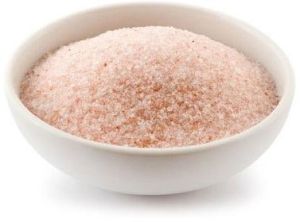
Rock Salt
25 Metric Ton (MOQ)
In common usage, salt is a mineral composed primarily of Sodium Chloride (NaCl). Salt is one of the oldest and most ubiquitous food seasonings, and is known to uniformly improve the taste perception of food, including otherwise unpalatable food. Some of the earliest evidence of salt processing dates to around 6000 BC, when people living in the area of present-day Romania boiled Spring water to extract salts; a salt works in china dates to approximately the same period. Salt was also prized by the ancient Hebrews, Greeks, Romans, Byzantines, Hitties, Egyptians, and Indians. Salt became an important article of trade and was transported by boat across the Mediterranean sea, along specially built salt roads, and across the Sahara on camel caravn. The scarcity and universal need for salt have led nations to go to war over it and use it to raise tax revenues. Salt is used in religious ceremonies and has other cultural and traditional significance. SALT IN INDIA Though salt was considered as “God’s gift” in ancient times and used for diplomatic purposes, in modern days it has more than 14,000 uses. India occupies the third place in the production of salt by producing 8.9 per cent ofthe total world production being cultivated in 1.45 lakh hectares. Gujarat, Rajasthan and Tamilnadu are the top-3 states in which the yield and labour productivity were found high among the salt producing states in India. In 2013-14, 59.61 lakh MT of salt was exported which accounts for Rs.844.4 crore. In India, the historical records speak about the dominance of salt as a medium of exchange and much before the invasion of Alexander, the Great, around 327 BC, salt was extracted from the salt mines of the Northern India and transported to different parts of the country. Though it was a luxury commodity for the poor people in India, Mahatma Gandhi (12-03-1930) broke the salt policy of the British Government by a protest declaring that “with this, I am weakening the foundation of British empire”. After independence, ‘salt’ became a central subject, headed by the Salt Commissioner of India. As the time advanced, uses of salt increased and the method of producing salt has also undergone significant changes. In modern times salt has about 14000 known uses from food to industry to de-icing. Presently about 110 countries are actively engaged in the production of salt and India occupies a place of pride at third place India however produces one of the cheapest salts as it exports to the major top two producers like wise China ( By Sea) at around 2013-2014 with 27.44 MT Origins - GUJRAT - The largest Salt producer state in india with latest tech and easy deployment through various ports like Kandla and Mundra (for Sea) Certificates - Our company is export complainace as per Indian rules and regulation. Port of loading - Majorly Port used for exports are Kandla and Mundra of Gujrat Packaging Sizes Skuz- 1. For Free flow Iodized salts in our brands:- ● 1 kg Packets @25 kg bags Packaging ● ½ kg Packets @25 kg bags packaging ● 1 kg Packets @50 kg bags packaging ● ½ kg Packets @50 kg bags packaging 2. Any white labeling can be done in your brands or any readily available brands. 3. Any Industrial , edible , or any other uses of Salt in any form of packaging as per the customer requirements can be met. 4. Any type of salt and the required chemical composition of customer preference and choice can be met. 5. Any types of rock salt, black salts, pink salts, bath salts. Payment Terms :- Preferred payment terms are 1. Letter of credit 2. Cash In advance Price :- Price of the product depends on the requirements of the customer where the minimum order quantity is one 20ft container. Expiry Time According to Indian Laws iodised salt iodisation should be in the range of 15 ppm -30 ppm where we have to state the best before 24 months. Industrial Salts do not have any expiry time. Previous Exports We have been one of the largest exporters of Bhutan Via road where we have exported around 6400 mt. We have also exported industrial salt to Nepal via roads. We have also supplied to people who do exports in Bangladesh
Processing Type : Refined
Color : Pink
Form : Powder
Classification : Chloride
Packaging Type : Packet
Type : Rock Salt
Country of Origin : India
...more
Rice
25 Metric Ton (MOQ)
Cultivation Type : Common
Color : Natural White
Form : Solid
Application : Cooking, Food, Human Consumption
Feature : Gluten Free, High In Protein, Low In Fat
Packaging Type : Jute Bags, Loose Packing
Country of Origin : India
...more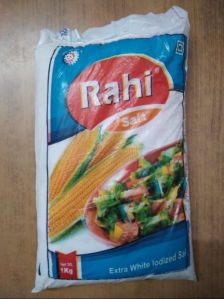
Rahi Extra White Iodised Salt
25 Metric Ton (MOQ)
In common usage, salt is a mineral composed primarily of Sodium Chloride (NaCl). Salt is one of the oldest and most ubiquitous food seasonings, and is known to uniformly improve the taste perception of food, including otherwise unpalatable food. Some of the earliest evidence of salt processing dates to around 6000 BC, when people living in the area of present-day Romania boiled Spring water to extract salts; a salt works in china dates to approximately the same period. Salt was also prized by the ancient Hebrews, Greeks, Romans, Byzantines, Hitties, Egyptians, and Indians. Salt became an important article of trade and was transported by boat across the Mediterranean sea, along specially built salt roads, and across the Sahara on camel caravn. The scarcity and universal need for salt have led nations to go to war over it and use it to raise tax revenues. Salt is used in religious ceremonies and has other cultural and traditional significance. SALT IN INDIA Though salt was considered as “God’s gift” in ancient times and used for diplomatic purposes, in modern days it has more than 14,000 uses. India occupies the third place in the production of salt by producing 8.9 per cent ofthe total world production being cultivated in 1.45 lakh hectares. Gujarat, Rajasthan and Tamilnadu are the top-3 states in which the yield and labour productivity were found high among the salt producing states in India. In 2013-14, 59.61 lakh MT of salt was exported which accounts for Rs.844.4 crore. In India, the historical records speak about the dominance of salt as a medium of exchange and much before the invasion of Alexander, the Great, around 327 BC, salt was extracted from the salt mines of the Northern India and transported to different parts of the country. Though it was a luxury commodity for the poor people in India, Mahatma Gandhi (12-03-1930) broke the salt policy of the British Government by a protest declaring that “with this, I am weakening the foundation of British empire”. After independence, ‘salt’ became a central subject, headed by the Salt Commissioner of India. As the time advanced, uses of salt increased and the method of producing salt has also undergone significant changes. In modern times salt has about 14000 known uses from food to industry to de-icing. Presently about 110 countries are actively engaged in the production of salt and India occupies a place of pride at third place India however produces one of the cheapest salts as it exports to the major top two producers like wise China ( By Sea) at around 2013-2014 with 27.44 MT Origins - GUJRAT - The largest Salt producer state in india with latest tech and easy deployment through various ports like Kandla and Mundra (for Sea) Certificates - Our company is export complainace as per Indian rules and regulation. Port of loading - Majorly Port used for exports are Kandla and Mundra of Gujrat Packaging Sizes Skuz- 1. For Free flow Iodized salts in our brands:- ● 1 kg Packets @25 kg bags Packaging ● ½ kg Packets @25 kg bags packaging ● 1 kg Packets @50 kg bags packaging ● ½ kg Packets @50 kg bags packaging 2. Any white labeling can be done in your brands or any readily available brands. 3. Any Industrial , edible , or any other uses of Salt in any form of packaging as per the customer requirements can be met. 4. Any type of salt and the required chemical composition of customer preference and choice can be met. 5. Any types of rock salt, black salts, pink salts, bath salts. Payment Terms :- Preferred payment terms are 1. Letter of credit 2. Cash In advance Price :- Price of the product depends on the requirements of the customer where the minimum order quantity is one 20ft container. Expiry Time According to Indian Laws iodised salt iodisation should be in the range of 15 ppm -30 ppm where we have to state the best before 24 months. Industrial Salts do not have any expiry time. Previous Exports We have been one of the largest exporters of Bhutan Via road where we have exported around 6400 mt. We have also exported industrial salt to Nepal via roads. We have also supplied to people who do exports in Bangladesh
Brand Name : Rahi Extra
Color : White
Form : Powder
Application : Cooking
Variety : Refined
Feature : Added Preservatives, Long Functional Life, Low Sodium, Non Harmful
Packaging Type : Plastic Packets
Packaging Size : 1Kg
Type : Iodized Salt
Country of Origin : India
...more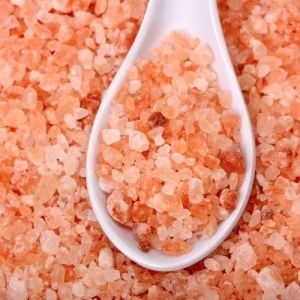
Pink Salt Lumps
25 Metric Ton (MOQ)
Color : Pink
Form : Lumps
Purity : 99%
Type : Rock Salt Lumps
Country of Origin : India
...more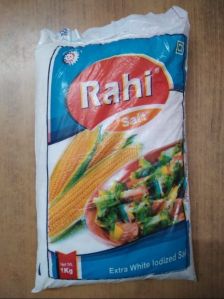
ordinary salt
25 Metric Ton (MOQ)
In common usage, salt is a mineral composed primarily of Sodium Chloride (NaCl). Salt is one of the oldest and most ubiquitous food seasonings, and is known to uniformly improve the taste perception of food, including otherwise unpalatable food. Some of the earliest evidence of salt processing dates to around 6000 BC, when people living in the area of present-day Romania boiled Spring water to extract salts; a salt works in china dates to approximately the same period. Salt was also prized by the ancient Hebrews, Greeks, Romans, Byzantines, Hitties, Egyptians, and Indians. Salt became an important article of trade and was transported by boat across the Mediterranean sea, along specially built salt roads, and across the Sahara on camel caravn. The scarcity and universal need for salt have led nations to go to war over it and use it to raise tax revenues. Salt is used in religious ceremonies and has other cultural and traditional significance. SALT IN INDIA Though salt was considered as “God’s gift” in ancient times and used for diplomatic purposes, in modern days it has more than 14,000 uses. India occupies the third place in the production of salt by producing 8.9 per cent ofthe total world production being cultivated in 1.45 lakh hectares. Gujarat, Rajasthan and Tamilnadu are the top-3 states in which the yield and labour productivity were found high among the salt producing states in India. In 2013-14, 59.61 lakh MT of salt was exported which accounts for Rs.844.4 crore. In India, the historical records speak about the dominance of salt as a medium of exchange and much before the invasion of Alexander, the Great, around 327 BC, salt was extracted from the salt mines of the Northern India and transported to different parts of the country. Though it was a luxury commodity for the poor people in India, Mahatma Gandhi (12-03-1930) broke the salt policy of the British Government by a protest declaring that “with this, I am weakening the foundation of British empire”. After independence, ‘salt’ became a central subject, headed by the Salt Commissioner of India. As the time advanced, uses of salt increased and the method of producing salt has also undergone significant changes. In modern times salt has about 14000 known uses from food to industry to de-icing. Presently about 110 countries are actively engaged in the production of salt and India occupies a place of pride at third place India however produces one of the cheapest salts as it exports to the major top two producers like wise China ( By Sea) at around 2013-2014 with 27.44 MT Origins - GUJRAT - The largest Salt producer state in india with latest tech and easy deployment through various ports like Kandla and Mundra (for Sea) Certificates - Our company is export complainace as per Indian rules and regulation. Port of loading - Majorly Port used for exports are Kandla and Mundra of Gujrat Packaging Sizes Skuz- 1. For Free flow Iodized salts in our brands:- ● 1 kg Packets @25 kg bags Packaging ● ½ kg Packets @25 kg bags packaging ● 1 kg Packets @50 kg bags packaging ● ½ kg Packets @50 kg bags packaging 2. Any white labeling can be done in your brands or any readily available brands. 3. Any Industrial , edible , or any other uses of Salt in any form of packaging as per the customer requirements can be met. 4. Any type of salt and the required chemical composition of customer preference and choice can be met. 5. Any types of rock salt, black salts, pink salts, bath salts. Payment Terms :- Preferred payment terms are 1. Letter of credit 2. Cash In advance Price :- Price of the product depends on the requirements of the customer where the minimum order quantity is one 20ft container. Expiry Time According to Indian Laws iodised salt iodisation should be in the range of 15 ppm -30 ppm where we have to state the best before 24 months. Industrial Salts do not have any expiry time. Previous Exports We have been one of the largest exporters of Bhutan Via road where we have exported around 6400 mt. We have also exported industrial salt to Nepal via roads. We have also supplied to people who do exports in Bangladesh
Type : Commercial Salt
Application : Cooking
Color : White
Variety : Refined
Feature : Added Preservatives, Long Functional Life, Low Sodium
Form : Powder
Packaging Type : Plastic Packet
Country of Origin : India
Packaging Size : 1 Kg
...more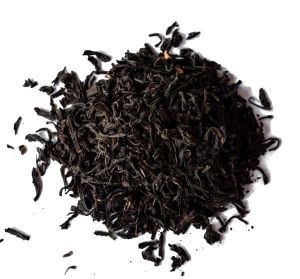
OP2 Orthodox Tea
100 Kilogram (MOQ)
Orthodox Tea Orthodox tea refers to the tea which is made or processed using traditional methods. Orthodox teas are generally bright and brisk and have a multilayered flavor profile. Orthodox Tea is produced using the traditional methods of Tea production which includes plucking, withering , rolling, oxidation and drying. Orthodox teas are carefully rolled or shaped into various sizes and styles depending on the type of tea being produced. Orthodox processing is used to produce various styles of loose leaf tea, including white, green, oolong and black Benefits of Orthodox Tea It is high in Antioxidants as compared to CTC which loses its antioxidant quality comparatively due to machine processing. Antioxidants help to neutralize damaged cells which help us to look and feel better. Helps prevent Cardiovascular Disease. Loose leaf tea has been shown to have a calming effect on the body and especially helps boost mental clarity. Loose leaf teas retain the Authentic Taste and are comparatively more rich in flavor and color. Loose leaf teas are organically processed thus giving it an advantage over the other in terms of quality. Typical tea bags are produced on an industrial scale and may sit in a warehouse or on a shelf for a long time before you ever get them. These low-grade leaves are usually picked, processed, and packaged by machines overseas.In contrast, our premium teas are carefully hand-selected and crafted by tea masters. EXTENSIONS The varieties of tea specified in the brochure are the major varieties demanded and exported by us globally. However, there are many other varieties too which are at times demanded and we fulfill such requirements too. We are a leading supplier and trader in the salt industry of India both in edible and industrial segments. WHITE LABELING A white-label product is a product or service produced by one company that other companies rebrand to make it appear as if they had made it. The name derives from the image of a white label on the packaging that can be filled in with the marketer's trade dress. We can also fulfill any White Labeling requirements of yours in any varieties of tea or in any of my pre-existing brand(s).
Cultivation Type : Natural
Color : Black
Form : Granules
Usage : Home, Office, Restaurant, Hotel
Grade Standard : OP2
Packaging Type : Plastic Bag
Packaging Size : 25kg And 50kg
Type : Orthodox Tea
Country of Origin : India
Speaciality : Strong Aroma, Non Harmful, Nice Fragrance, Health Conscious, Delicious Taste
...more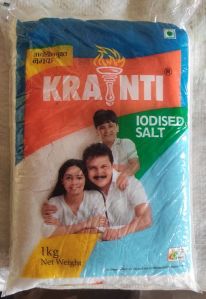
Kranti Iodised Salt
25 Metric Ton (MOQ)
In common usage, salt is a mineral composed primarily of Sodium Chloride (NaCl). Salt is one of the oldest and most ubiquitous food seasonings, and is known to uniformly improve the taste perception of food, including otherwise unpalatable food. Some of the earliest evidence of salt processing dates to around 6000 BC, when people living in the area of present-day Romania boiled Spring water to extract salts; a salt works in china dates to approximately the same period. Salt was also prized by the ancient Hebrews, Greeks, Romans, Byzantines, Hitties, Egyptians, and Indians. Salt became an important article of trade and was transported by boat across the Mediterranean sea, along specially built salt roads, and across the Sahara on camel caravn. The scarcity and universal need for salt have led nations to go to war over it and use it to raise tax revenues. Salt is used in religious ceremonies and has other cultural and traditional significance. SALT IN INDIA Though salt was considered as “God’s gift” in ancient times and used for diplomatic purposes, in modern days it has more than 14,000 uses. India occupies the third place in the production of salt by producing 8.9 per cent ofthe total world production being cultivated in 1.45 lakh hectares. Gujarat, Rajasthan and Tamilnadu are the top-3 states in which the yield and labour productivity were found high among the salt producing states in India. In 2013-14, 59.61 lakh MT of salt was exported which accounts for Rs.844.4 crore. In India, the historical records speak about the dominance of salt as a medium of exchange and much before the invasion of Alexander, the Great, around 327 BC, salt was extracted from the salt mines of the Northern India and transported to different parts of the country. Though it was a luxury commodity for the poor people in India, Mahatma Gandhi (12-03-1930) broke the salt policy of the British Government by a protest declaring that “with this, I am weakening the foundation of British empire”. After independence, ‘salt’ became a central subject, headed by the Salt Commissioner of India. As the time advanced, uses of salt increased and the method of producing salt has also undergone significant changes. In modern times salt has about 14000 known uses from food to industry to de-icing. Presently about 110 countries are actively engaged in the production of salt and India occupies a place of pride at third place India however produces one of the cheapest salts as it exports to the major top two producers like wise China ( By Sea) at around 2013-2014 with 27.44 MT Origins - GUJRAT - The largest Salt producer state in india with latest tech and easy deployment through various ports like Kandla and Mundra (for Sea) Certificates - Our company is export complainace as per Indian rules and regulation. Port of loading - Majorly Port used for exports are Kandla and Mundra of Gujrat Packaging Sizes Skuz- 1. For Free flow Iodized salts in our brands:- ● 1 kg Packets @25 kg bags Packaging ● ½ kg Packets @25 kg bags packaging ● 1 kg Packets @50 kg bags packaging ● ½ kg Packets @50 kg bags packaging 2. Any white labeling can be done in your brands or any readily available brands. 3. Any Industrial , edible , or any other uses of Salt in any form of packaging as per the customer requirements can be met. 4. Any type of salt and the required chemical composition of customer preference and choice can be met. 5. Any types of rock salt, black salts, pink salts, bath salts. Payment Terms :- Preferred payment terms are 1. Letter of credit 2. Cash In advance Price :- Price of the product depends on the requirements of the customer where the minimum order quantity is one 20ft container. Expiry Time According to Indian Laws iodised salt iodisation should be in the range of 15 ppm -30 ppm where we have to state the best before 24 months. Industrial Salts do not have any expiry time. Previous Exports We have been one of the largest exporters of Bhutan Via road where we have exported around 6400 mt. We have also exported industrial salt to Nepal via roads. We have also supplied to people who do exports in Bangladesh
Brand Name : Kranti
Color : White
Form : Powder
Application : Cooking
Variety : Refined
Purity : 99%
Feature : Added Preservatives, Long Functional Life, Low Sodium, Non Harmful
Packaging Type : Plastic Packets
Packaging Size : 1 Kg
Type : Commercial Salt
Country of Origin : India
...more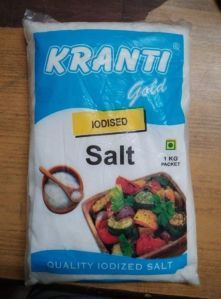
Kranti Gold Iodised Salt
25 Metric Ton (MOQ)
In common usage, salt is a mineral composed primarily of Sodium Chloride (NaCl). Salt is one of the oldest and most ubiquitous food seasonings, and is known to uniformly improve the taste perception of food, including otherwise unpalatable food. Some of the earliest evidence of salt processing dates to around 6000 BC, when people living in the area of present-day Romania boiled Spring water to extract salts; a salt works in china dates to approximately the same period. Salt was also prized by the ancient Hebrews, Greeks, Romans, Byzantines, Hitties, Egyptians, and Indians. Salt became an important article of trade and was transported by boat across the Mediterranean sea, along specially built salt roads, and across the Sahara on camel caravn. The scarcity and universal need for salt have led nations to go to war over it and use it to raise tax revenues. Salt is used in religious ceremonies and has other cultural and traditional significance. SALT IN INDIA Though salt was considered as “God’s gift” in ancient times and used for diplomatic purposes, in modern days it has more than 14,000 uses. India occupies the third place in the production of salt by producing 8.9 per cent ofthe total world production being cultivated in 1.45 lakh hectares. Gujarat, Rajasthan and Tamilnadu are the top-3 states in which the yield and labour productivity were found high among the salt producing states in India. In 2013-14, 59.61 lakh MT of salt was exported which accounts for Rs.844.4 crore. In India, the historical records speak about the dominance of salt as a medium of exchange and much before the invasion of Alexander, the Great, around 327 BC, salt was extracted from the salt mines of the Northern India and transported to different parts of the country. Though it was a luxury commodity for the poor people in India, Mahatma Gandhi (12-03-1930) broke the salt policy of the British Government by a protest declaring that “with this, I am weakening the foundation of British empire”. After independence, ‘salt’ became a central subject, headed by the Salt Commissioner of India. As the time advanced, uses of salt increased and the method of producing salt has also undergone significant changes. In modern times salt has about 14000 known uses from food to industry to de-icing. Presently about 110 countries are actively engaged in the production of salt and India occupies a place of pride at third place India however produces one of the cheapest salts as it exports to the major top two producers like wise China ( By Sea) at around 2013-2014 with 27.44 MT Origins - GUJRAT - The largest Salt producer state in india with latest tech and easy deployment through various ports like Kandla and Mundra (for Sea) Certificates - Our company is export complainace as per Indian rules and regulation. Port of loading - Majorly Port used for exports are Kandla and Mundra of Gujrat Packaging Sizes Skuz- 1. For Free flow Iodized salts in our brands:- ● 1 kg Packets @25 kg bags Packaging ● ½ kg Packets @25 kg bags packaging ● 1 kg Packets @50 kg bags packaging ● ½ kg Packets @50 kg bags packaging 2. Any white labeling can be done in your brands or any readily available brands. 3. Any Industrial , edible , or any other uses of Salt in any form of packaging as per the customer requirements can be met. 4. Any type of salt and the required chemical composition of customer preference and choice can be met. 5. Any types of rock salt, black salts, pink salts, bath salts. Payment Terms :- Preferred payment terms are 1. Letter of credit 2. Cash In advance Price :- Price of the product depends on the requirements of the customer where the minimum order quantity is one 20ft container. Expiry Time According to Indian Laws iodised salt iodisation should be in the range of 15 ppm -30 ppm where we have to state the best before 24 months. Industrial Salts do not have any expiry time. Previous Exports We have been one of the largest exporters of Bhutan Via road where we have exported around 6400 mt. We have also exported industrial salt to Nepal via roads. We have also supplied to people who do exports in Bangladesh
Brand Name : Kranti Gold
Color : White
Form : Powder
Application : Cooking
Variety : Refined
Purity : 99%
Feature : Added Preservatives, Long Functional Life, Low Sodium, Non Harmful
Packaging Type : Plastic Packet
Packaging Size : 1 Kg
Type : Commercial Salt
Country of Origin : India
...more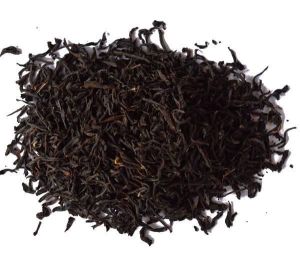
GFOP2 Orthodox Tea
100 Kilogram (MOQ)
Orthodox Tea Orthodox tea refers to the tea which is made or processed using traditional methods. Orthodox teas are generally bright and brisk and have a multilayered flavor profile. Orthodox Tea is produced using the traditional methods of Tea production which includes plucking, withering , rolling, oxidation and drying. Orthodox teas are carefully rolled or shaped into various sizes and styles depending on the type of tea being produced. Orthodox processing is used to produce various styles of loose leaf tea, including white, green, oolong and black Benefits of Orthodox Tea It is high in Antioxidants as compared to CTC which loses its antioxidant quality comparatively due to machine processing. Antioxidants help to neutralize damaged cells which help us to look and feel better. Helps prevent Cardiovascular Disease. Loose leaf tea has been shown to have a calming effect on the body and especially helps boost mental clarity. Loose leaf teas retain the Authentic Taste and are comparatively more rich in flavor and color. Loose leaf teas are organically processed thus giving it an advantage over the other in terms of quality. Typical tea bags are produced on an industrial scale and may sit in a warehouse or on a shelf for a long time before you ever get them. These low-grade leaves are usually picked, processed, and packaged by machines overseas.In contrast, our premium teas are carefully hand-selected and crafted by tea masters. EXTENSIONS The varieties of tea specified in the brochure are the major varieties demanded and exported by us globally. However, there are many other varieties too which are at times demanded and we fulfill such requirements too. We are a leading supplier and trader in the salt industry of India both in edible and industrial segments. WHITE LABELING A white-label product is a product or service produced by one company that other companies rebrand to make it appear as if they had made it. The name derives from the image of a white label on the packaging that can be filled in with the marketer's trade dress. We can also fulfill any White Labeling requirements of yours in any varieties of tea or in any of my pre-existing brand(s).
Cultivation Type : Natural
Color : Black
Form : Granules
Usage : Home, Office, Restaurant, Hotel
Grade Standard : GFOP2
Packaging Type : Plastic Bag
Packaging Size : 25kg And 50kg
Type : Orthodox Tea
Country of Origin : India
Speaciality : Strong Aroma, Non Harmful, Nice Fragrance, Health Conscious, Delicious Taste
...more
GFBOP2 Orthodox Tea
100 Kilogram (MOQ)
Orthodox Tea Orthodox tea refers to the tea which is made or processed using traditional methods. Orthodox teas are generally bright and brisk and have a multilayered flavor profile. Orthodox Tea is produced using the traditional methods of Tea production which includes plucking, withering , rolling, oxidation and drying. Orthodox teas are carefully rolled or shaped into various sizes and styles depending on the type of tea being produced. Orthodox processing is used to produce various styles of loose leaf tea, including white, green, oolong and black Benefits of Orthodox Tea It is high in Antioxidants as compared to CTC which loses its antioxidant quality comparatively due to machine processing. Antioxidants help to neutralize damaged cells which help us to look and feel better. Helps prevent Cardiovascular Disease. Loose leaf tea has been shown to have a calming effect on the body and especially helps boost mental clarity. Loose leaf teas retain the Authentic Taste and are comparatively more rich in flavor and color. Loose leaf teas are organically processed thus giving it an advantage over the other in terms of quality. Typical tea bags are produced on an industrial scale and may sit in a warehouse or on a shelf for a long time before you ever get them. These low-grade leaves are usually picked, processed, and packaged by machines overseas.In contrast, our premium teas are carefully hand-selected and crafted by tea masters. EXTENSIONS The varieties of tea specified in the brochure are the major varieties demanded and exported by us globally. However, there are many other varieties too which are at times demanded and we fulfill such requirements too. We are a leading supplier and trader in the salt industry of India both in edible and industrial segments. WHITE LABELING A white-label product is a product or service produced by one company that other companies rebrand to make it appear as if they had made it. The name derives from the image of a white label on the packaging that can be filled in with the marketer's trade dress. We can also fulfill any White Labeling requirements of yours in any varieties of tea or in any of my pre-existing brand(s).
Cultivation Type : Natural
Color : Black
Form : Granules
Usage : Home, Office, Restaurant, Hotel
Grade Standard : GFBOP2
Packaging Type : Plastic Bag
Packaging Size : 25kg And 50kg
Type : Orthodox Tea
Country of Origin : India
Speaciality : Strong Aroma, Non Harmful, Nice Fragrance, Health Conscious, Delicious Taste
...more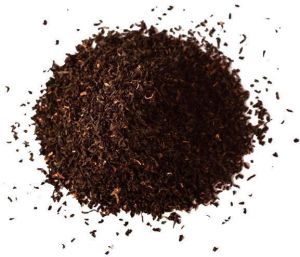
GBOP2 Orthodox Tea
100 Kilogram (MOQ)
Orthodox Tea Orthodox tea refers to the tea which is made or processed using traditional methods. Orthodox teas are generally bright and brisk and have a multilayered flavor profile. Orthodox Tea is produced using the traditional methods of Tea production which includes plucking, withering , rolling, oxidation and drying. Orthodox teas are carefully rolled or shaped into various sizes and styles depending on the type of tea being produced. Orthodox processing is used to produce various styles of loose leaf tea, including white, green, oolong and black Benefits of Orthodox Tea It is high in Antioxidants as compared to CTC which loses its antioxidant quality comparatively due to machine processing. Antioxidants help to neutralize damaged cells which help us to look and feel better. Helps prevent Cardiovascular Disease. Loose leaf tea has been shown to have a calming effect on the body and especially helps boost mental clarity. Loose leaf teas retain the Authentic Taste and are comparatively more rich in flavor and color. Loose leaf teas are organically processed thus giving it an advantage over the other in terms of quality. Typical tea bags are produced on an industrial scale and may sit in a warehouse or on a shelf for a long time before you ever get them. These low-grade leaves are usually picked, processed, and packaged by machines overseas.In contrast, our premium teas are carefully hand-selected and crafted by tea masters. EXTENSIONS The varieties of tea specified in the brochure are the major varieties demanded and exported by us globally. However, there are many other varieties too which are at times demanded and we fulfill such requirements too. We are a leading supplier and trader in the salt industry of India both in edible and industrial segments. WHITE LABELING A white-label product is a product or service produced by one company that other companies rebrand to make it appear as if they had made it. The name derives from the image of a white label on the packaging that can be filled in with the marketer's trade dress. We can also fulfill any White Labeling requirements of yours in any varieties of tea or in any of my pre-existing brand(s).
Cultivation Type : Natural
Color : Black
Form : Granules
Usage : Home, Office, Restaurant, Hotel
Grade Standard : GBOP2
Packaging Type : Plastic Bag
Packaging Size : 25kg And 50kg
Type : Orthodox Tea
Country of Origin : India
Speaciality : Strong Aroma, Non Harmful, Nice Fragrance, Health Conscious, Delicious Taste
...more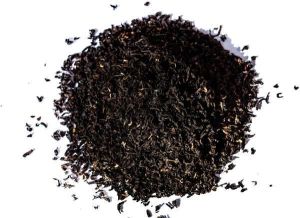
FBOP2 Orthodox Tea
100 Kilogram (MOQ)
Orthodox Tea Orthodox tea refers to the tea which is made or processed using traditional methods. Orthodox teas are generally bright and brisk and have a multilayered flavor profile. Orthodox Tea is produced using the traditional methods of Tea production which includes plucking, withering , rolling, oxidation and drying. Orthodox teas are carefully rolled or shaped into various sizes and styles depending on the type of tea being produced. Orthodox processing is used to produce various styles of loose leaf tea, including white, green, oolong and black Benefits of Orthodox Tea It is high in Antioxidants as compared to CTC which loses its antioxidant quality comparatively due to machine processing. Antioxidants help to neutralize damaged cells which help us to look and feel better. Helps prevent Cardiovascular Disease. Loose leaf tea has been shown to have a calming effect on the body and especially helps boost mental clarity. Loose leaf teas retain the Authentic Taste and are comparatively more rich in flavor and color. Loose leaf teas are organically processed thus giving it an advantage over the other in terms of quality. Typical tea bags are produced on an industrial scale and may sit in a warehouse or on a shelf for a long time before you ever get them. These low-grade leaves are usually picked, processed, and packaged by machines overseas.In contrast, our premium teas are carefully hand-selected and crafted by tea masters. EXTENSIONS The varieties of tea specified in the brochure are the major varieties demanded and exported by us globally. However, there are many other varieties too which are at times demanded and we fulfill such requirements too. We are a leading supplier and trader in the salt industry of India both in edible and industrial segments. WHITE LABELING A white-label product is a product or service produced by one company that other companies rebrand to make it appear as if they had made it. The name derives from the image of a white label on the packaging that can be filled in with the marketer's trade dress. We can also fulfill any White Labeling requirements of yours in any varieties of tea or in any of my pre-existing brand(s).
Cultivation Type : Natural
Color : Brown
Form : Granules
Usage : Home, Office, Restaurant, Hotel
Grade Standard : FBOP2
Packaging Type : Plastic Bag
Packaging Size : 25kg And 50kg
Type : Orthodox Tea
Country of Origin : India
Speaciality : Strong Aroma, Pure Organic, Non Harmful, Nice Fragrance, Health Conscious
...more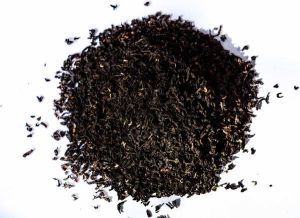
FBOP Orthodox Tea
100 Kilogram (MOQ)
Orthodox Tea Orthodox tea refers to the tea which is made or processed using traditional methods. Orthodox teas are generally bright and brisk and have a multilayered flavor profile. Orthodox Tea is produced using the traditional methods of Tea production which includes plucking, withering , rolling, oxidation and drying. Orthodox teas are carefully rolled or shaped into various sizes and styles depending on the type of tea being produced. Orthodox processing is used to produce various styles of loose leaf tea, including white, green, oolong and black Benefits of Orthodox Tea It is high in Antioxidants as compared to CTC which loses its antioxidant quality comparatively due to machine processing. Antioxidants help to neutralize damaged cells which help us to look and feel better. Helps prevent Cardiovascular Disease. Loose leaf tea has been shown to have a calming effect on the body and especially helps boost mental clarity. Loose leaf teas retain the Authentic Taste and are comparatively more rich in flavor and color. Loose leaf teas are organically processed thus giving it an advantage over the other in terms of quality. Typical tea bags are produced on an industrial scale and may sit in a warehouse or on a shelf for a long time before you ever get them. These low-grade leaves are usually picked, processed, and packaged by machines overseas.In contrast, our premium teas are carefully hand-selected and crafted by tea masters. EXTENSIONS The varieties of tea specified in the brochure are the major varieties demanded and exported by us globally. However, there are many other varieties too which are at times demanded and we fulfill such requirements too. We are a leading supplier and trader in the salt industry of India both in edible and industrial segments. WHITE LABELING A white-label product is a product or service produced by one company that other companies rebrand to make it appear as if they had made it. The name derives from the image of a white label on the packaging that can be filled in with the marketer's trade dress. We can also fulfill any White Labeling requirements of yours in any varieties of tea or in any of my pre-existing brand(s).
Cultivation Type : Natural
Color : Black
Form : Granules
Usage : Home, Office, Restaurant
Grade Standard : FBOP
Packaging Type : Plastic Bag
Packaging Size : 25kg And 50kg
Type : Orthodox Tea
Country of Origin : India
Speaciality : Strong Aroma, Non Harmful, Nice Fragrance, Health Conscious, Delicious Taste
...more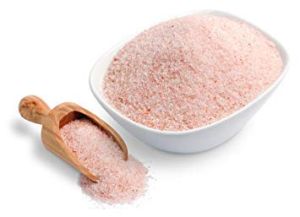
Edible Salt
25 Metric Ton (MOQ)
In common usage, salt is a mineral composed primarily of Sodium Chloride (NaCl). Salt is one of the oldest and most ubiquitous food seasonings, and is known to uniformly improve the taste perception of food, including otherwise unpalatable food. Some of the earliest evidence of salt processing dates to around 6000 BC, when people living in the area of present-day Romania boiled Spring water to extract salts; a salt works in china dates to approximately the same period. Salt was also prized by the ancient Hebrews, Greeks, Romans, Byzantines, Hitties, Egyptians, and Indians. Salt became an important article of trade and was transported by boat across the Mediterranean sea, along specially built salt roads, and across the Sahara on camel caravn. The scarcity and universal need for salt have led nations to go to war over it and use it to raise tax revenues. Salt is used in religious ceremonies and has other cultural and traditional significance. SALT IN INDIA Though salt was considered as “God’s gift” in ancient times and used for diplomatic purposes, in modern days it has more than 14,000 uses. India occupies the third place in the production of salt by producing 8.9 per cent ofthe total world production being cultivated in 1.45 lakh hectares. Gujarat, Rajasthan and Tamilnadu are the top-3 states in which the yield and labour productivity were found high among the salt producing states in India. In 2013-14, 59.61 lakh MT of salt was exported which accounts for Rs.844.4 crore. In India, the historical records speak about the dominance of salt as a medium of exchange and much before the invasion of Alexander, the Great, around 327 BC, salt was extracted from the salt mines of the Northern India and transported to different parts of the country. Though it was a luxury commodity for the poor people in India, Mahatma Gandhi (12-03-1930) broke the salt policy of the British Government by a protest declaring that “with this, I am weakening the foundation of British empire”. After independence, ‘salt’ became a central subject, headed by the Salt Commissioner of India. As the time advanced, uses of salt increased and the method of producing salt has also undergone significant changes. In modern times salt has about 14000 known uses from food to industry to de-icing. Presently about 110 countries are actively engaged in the production of salt and India occupies a place of pride at third place India however produces one of the cheapest salts as it exports to the major top two producers like wise China ( By Sea) at around 2013-2014 with 27.44 MT Origins - GUJRAT - The largest Salt producer state in india with latest tech and easy deployment through various ports like Kandla and Mundra (for Sea) Certificates - Our company is export complainace as per Indian rules and regulation. Port of loading - Majorly Port used for exports are Kandla and Mundra of Gujrat Packaging Sizes Skuz- 1. For Free flow Iodized salts in our brands:- ● 1 kg Packets @25 kg bags Packaging ● ½ kg Packets @25 kg bags packaging ● 1 kg Packets @50 kg bags packaging ● ½ kg Packets @50 kg bags packaging 2. Any white labeling can be done in your brands or any readily available brands. 3. Any Industrial , edible , or any other uses of Salt in any form of packaging as per the customer requirements can be met. 4. Any type of salt and the required chemical composition of customer preference and choice can be met. 5. Any types of rock salt, black salts, pink salts, bath salts. Payment Terms :- Preferred payment terms are 1. Letter of credit 2. Cash In advance Price :- Price of the product depends on the requirements of the customer where the minimum order quantity is one 20ft container. Expiry Time According to Indian Laws iodised salt iodisation should be in the range of 15 ppm -30 ppm where we have to state the best before 24 months. Industrial Salts do not have any expiry time. Previous Exports We have been one of the largest exporters of Bhutan Via road where we have exported around 6400 mt. We have also exported industrial salt to Nepal via roads. We have also supplied to people who do exports in Bangladesh
Color : Pink
Form : Powder
Application : Cooking
Variety : Refined
Classification : Cooking Salt Or Edible Salt
Feature : Added Preservatives, Long Functional Life, Low Sodium, Non Harmful
Packaging Type : Plastic Packets
Packaging Size : 25kg And 50kg
Type : Edible Salt
Country of Origin : India
...more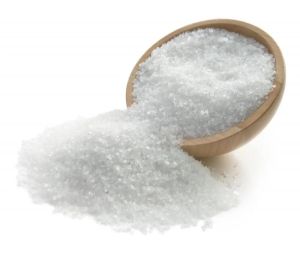
Edible Refine Salt
25 Metric Ton (MOQ)
In common usage, salt is a mineral composed primarily of Sodium Chloride (NaCl). Salt is one of the oldest and most ubiquitous food seasonings, and is known to uniformly improve the taste perception of food, including otherwise unpalatable food. Some of the earliest evidence of salt processing dates to around 6000 BC, when people living in the area of present-day Romania boiled Spring water to extract salts; a salt works in china dates to approximately the same period. Salt was also prized by the ancient Hebrews, Greeks, Romans, Byzantines, Hitties, Egyptians, and Indians. Salt became an important article of trade and was transported by boat across the Mediterranean sea, along specially built salt roads, and across the Sahara on camel caravn. The scarcity and universal need for salt have led nations to go to war over it and use it to raise tax revenues. Salt is used in religious ceremonies and has other cultural and traditional significance. SALT IN INDIA Though salt was considered as “God’s gift” in ancient times and used for diplomatic purposes, in modern days it has more than 14,000 uses. India occupies the third place in the production of salt by producing 8.9 per cent ofthe total world production being cultivated in 1.45 lakh hectares. Gujarat, Rajasthan and Tamilnadu are the top-3 states in which the yield and labour productivity were found high among the salt producing states in India. In 2013-14, 59.61 lakh MT of salt was exported which accounts for Rs.844.4 crore. In India, the historical records speak about the dominance of salt as a medium of exchange and much before the invasion of Alexander, the Great, around 327 BC, salt was extracted from the salt mines of the Northern India and transported to different parts of the country. Though it was a luxury commodity for the poor people in India, Mahatma Gandhi (12-03-1930) broke the salt policy of the British Government by a protest declaring that “with this, I am weakening the foundation of British empire”. After independence, ‘salt’ became a central subject, headed by the Salt Commissioner of India. As the time advanced, uses of salt increased and the method of producing salt has also undergone significant changes. In modern times salt has about 14000 known uses from food to industry to de-icing. Presently about 110 countries are actively engaged in the production of salt and India occupies a place of pride at third place India however produces one of the cheapest salts as it exports to the major top two producers like wise China ( By Sea) at around 2013-2014 with 27.44 MT Origins - GUJRAT - The largest Salt producer state in india with latest tech and easy deployment through various ports like Kandla and Mundra (for Sea) Certificates - Our company is export complainace as per Indian rules and regulation. Port of loading - Majorly Port used for exports are Kandla and Mundra of Gujrat Packaging Sizes Skuz- 1. For Free flow Iodized salts in our brands:- ● 1 kg Packets @25 kg bags Packaging ● ½ kg Packets @25 kg bags packaging ● 1 kg Packets @50 kg bags packaging ● ½ kg Packets @50 kg bags packaging 2. Any white labeling can be done in your brands or any readily available brands. 3. Any Industrial , edible , or any other uses of Salt in any form of packaging as per the customer requirements can be met. 4. Any type of salt and the required chemical composition of customer preference and choice can be met. 5. Any types of rock salt, black salts, pink salts, bath salts. Payment Terms :- Preferred payment terms are 1. Letter of credit 2. Cash In advance Price :- Price of the product depends on the requirements of the customer where the minimum order quantity is one 20ft container. Expiry Time According to Indian Laws iodised salt iodisation should be in the range of 15 ppm -30 ppm where we have to state the best before 24 months. Industrial Salts do not have any expiry time. Previous Exports We have been one of the largest exporters of Bhutan Via road where we have exported around 6400 mt. We have also exported industrial salt to Nepal via roads. We have also supplied to people who do exports in Bangladesh
Packaging Size : 25kg And 50kg
Packaging Type : Plastic Packets
Application : Cooking
Country of Origin : India
...more
CTC PD Tea
100 Kilogram (MOQ)
What is Tea? Tea is an aromatic beverage prepared by pouring hot or boiling water over cured or fresh leaves of Camellia sinensis, an evergreen shrub. Tea is also rarely made from the leaves of Camellia taliensis. After plain water, tea is the most widely many different types of tea; some have a cooling, slightly bitter, and astringent flavor, while others have vastly different profiles that include sweet, nutty, floral, or grassy notes. Tea has a stimulating effect in humans primarily due to its caffeine content. Varieties Basically, tea segments which are globally demanded and exported by us arecategorized as CTC, Orthodox and Green Tea. We have briefed upon each category in the brochure ahead. CTC Tea CTC Tea is processed using the "crush, tear and curl" (CTC) method. Leaves processed using the CTC method are not rolled, but are placed through cylindrical rollers with small teeth. The rollers crush, tear and curl the tea leaves, hence the name of the method. CTC tea was developed during the Second World War to increase the weight of tea that can be packed into a bag or sack. With the popularity of tea bags, this method has also grown in popularity. Tea processed using CTC ten ds to brew faster and yields more cups of tea per kilogram. The brewed tea often tends towards a red color. Preparation of CTC Tea When preparing CTC Tea, one teaspoon should be used per 6 oz. cup. The water should be boiled thoroughly before being poured, and the tea should be allowed to brew for 3-4 minutes & milk. Processing of CTC Tea After the harvest, the tea leaves are first withered by blowing air on them. Then black teas are processed in either of two ways, CTC (Crush, Tear, Curl). This method is efficient and effective for producing a better quality product from medium and lower quality leaves. Next, the leaves are oxidized under controlled temperature and humidity. (This process is also called "fermentation", which is a misnomer since no actual fermentation takes place.) The level of oxidation determines the quality of the tea. Since oxidation begins at the rolling stage itself, the time between these stages is also a crucial factor in the quality of the tea. Then the leaves are dried to arrest the oxidation process. Finally, the tea leaves are sorted into grades according to their sizes (leaf, brokens, fannings and dust), usually with the use of sieves. The tea could be further sub-graded according to other criteria. The CTC tea is ready for packaging.
Cultivation Type : Common
Color : Brown
Feature : Strong Aroma, Non Harmful, Nice Frangrance, Good Taste
Packaging Type : Plastic Bag
Packaging Size : 25kg and 50kg
Type : Ctc Tea
Country of Origin : India
...more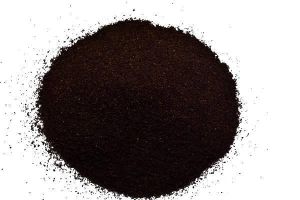
Ctc Dust Tea
100 Kilogram (MOQ)
What is Tea? Tea is an aromatic beverage prepared by pouring hot or boiling water over cured or fresh leaves of Camellia sinensis, an evergreen shrub. Tea is also rarely made from the leaves of Camellia taliensis. After plain water, tea is the most widely many different types of tea; some have a cooling, slightly bitter, and astringent flavor, while others have vastly different profiles that include sweet, nutty, floral, or grassy notes. Tea has a stimulating effect in humans primarily due to its caffeine content. Varieties Basically, tea segments which are globally demanded and exported by us arecategorized as CTC, Orthodox and Green Tea. We have briefed upon each category in the brochure ahead. CTC Tea CTC Tea is processed using the "crush, tear and curl" (CTC) method. Leaves processed using the CTC method are not rolled, but are placed through cylindrical rollers with small teeth. The rollers crush, tear and curl the tea leaves, hence the name of the method. CTC tea was developed during the Second World War to increase the weight of tea that can be packed into a bag or sack. With the popularity of tea bags, this method has also grown in popularity. Tea processed using CTC ten ds to brew faster and yields more cups of tea per kilogram. The brewed tea often tends towards a red color. Preparation of CTC Tea When preparing CTC Tea, one teaspoon should be used per 6 oz. cup. The water should be boiled thoroughly before being poured, and the tea should be allowed to brew for 3-4 minutes & milk. Processing of CTC Tea After the harvest, the tea leaves are first withered by blowing air on them. Then black teas are processed in either of two ways, CTC (Crush, Tear, Curl). This method is efficient and effective for producing a better quality product from medium and lower quality leaves. Next, the leaves are oxidized under controlled temperature and humidity. (This process is also called "fermentation", which is a misnomer since no actual fermentation takes place.) The level of oxidation determines the quality of the tea. Since oxidation begins at the rolling stage itself, the time between these stages is also a crucial factor in the quality of the tea. Then the leaves are dried to arrest the oxidation process. Finally, the tea leaves are sorted into grades according to their sizes (leaf, brokens, fannings and dust), usually with the use of sieves. The tea could be further sub-graded according to other criteria. The CTC tea is ready for packaging.
Cultivation Type : Common
Color : Brown
Grade : Dust
Feature : Strong Aroma, Non Harmful, Nice Frangrance, Good Taste
Packaging Type : Plastic Bag
Packaging Size : 25kg and 50kg
Type : Ctc Tea
Country of Origin : India
...more
CTC BPS Tea
100 Kilogram (MOQ)
What is Tea? Tea is an aromatic beverage prepared by pouring hot or boiling water over cured or fresh leaves of Camellia sinensis, an evergreen shrub. Tea is also rarely made from the leaves of Camellia taliensis. After plain water, tea is the most widely many different types of tea; some have a cooling, slightly bitter, and astringent flavor, while others have vastly different profiles that include sweet, nutty, floral, or grassy notes. Tea has a stimulating effect in humans primarily due to its caffeine content. Varieties Basically, tea segments which are globally demanded and exported by us arecategorized as CTC, Orthodox and Green Tea. We have briefed upon each category in the brochure ahead. CTC Tea CTC Tea is processed using the "crush, tear and curl" (CTC) method. Leaves processed using the CTC method are not rolled, but are placed through cylindrical rollers with small teeth. The rollers crush, tear and curl the tea leaves, hence the name of the method. CTC tea was developed during the Second World War to increase the weight of tea that can be packed into a bag or sack. With the popularity of tea bags, this method has also grown in popularity. Tea processed using CTC ten ds to brew faster and yields more cups of tea per kilogram. The brewed tea often tends towards a red color. Preparation of CTC Tea When preparing CTC Tea, one teaspoon should be used per 6 oz. cup. The water should be boiled thoroughly before being poured, and the tea should be allowed to brew for 3-4 minutes & milk. Processing of CTC Tea After the harvest, the tea leaves are first withered by blowing air on them. Then black teas are processed in either of two ways, CTC (Crush, Tear, Curl). This method is efficient and effective for producing a better quality product from medium and lower quality leaves. Next, the leaves are oxidized under controlled temperature and humidity. (This process is also called "fermentation", which is a misnomer since no actual fermentation takes place.) The level of oxidation determines the quality of the tea. Since oxidation begins at the rolling stage itself, the time between these stages is also a crucial factor in the quality of the tea. Then the leaves are dried to arrest the oxidation process. Finally, the tea leaves are sorted into grades according to their sizes (leaf, brokens, fannings and dust), usually with the use of sieves. The tea could be further sub-graded according to other criteria. The CTC tea is ready for packaging.
Cultivation Type : Common
Color : Black
Grade : BPS
Feature : Strong Aroma, Non Harmful, Nice Frangrance, Good Taste
Packaging Type : Plastic Bag
Packaging Size : 25kg and 50kg
Type : Ctc Tea
Country of Origin : India
...more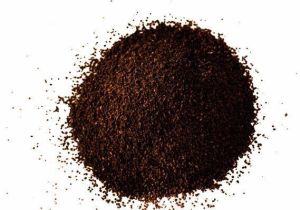
Ctc Bp Tea
100 Kilogram (MOQ)
What is Tea? Tea is an aromatic beverage prepared by pouring hot or boiling water over cured or fresh leaves of Camellia sinensis, an evergreen shrub. Tea is also rarely made from the leaves of Camellia taliensis. After plain water, tea is the most widely many different types of tea; some have a cooling, slightly bitter, and astringent flavor, while others have vastly different profiles that include sweet, nutty, floral, or grassy notes. Tea has a stimulating effect in humans primarily due to its caffeine content. Varieties Basically, tea segments which are globally demanded and exported by us arecategorized as CTC, Orthodox and Green Tea. We have briefed upon each category in the brochure ahead. CTC Tea CTC Tea is processed using the "crush, tear and curl" (CTC) method. Leaves processed using the CTC method are not rolled, but are placed through cylindrical rollers with small teeth. The rollers crush, tear and curl the tea leaves, hence the name of the method. CTC tea was developed during the Second World War to increase the weight of tea that can be packed into a bag or sack. With the popularity of tea bags, this method has also grown in popularity. Tea processed using CTC ten ds to brew faster and yields more cups of tea per kilogram. The brewed tea often tends towards a red color. Preparation of CTC Tea When preparing CTC Tea, one teaspoon should be used per 6 oz. cup. The water should be boiled thoroughly before being poured, and the tea should be allowed to brew for 3-4 minutes & milk. Processing of CTC Tea After the harvest, the tea leaves are first withered by blowing air on them. Then black teas are processed in either of two ways, CTC (Crush, Tear, Curl). This method is efficient and effective for producing a better quality product from medium and lower quality leaves. Next, the leaves are oxidized under controlled temperature and humidity. (This process is also called "fermentation", which is a misnomer since no actual fermentation takes place.) The level of oxidation determines the quality of the tea. Since oxidation begins at the rolling stage itself, the time between these stages is also a crucial factor in the quality of the tea. Then the leaves are dried to arrest the oxidation process. Finally, the tea leaves are sorted into grades according to their sizes (leaf, brokens, fannings and dust), usually with the use of sieves. The tea could be further sub-graded according to other criteria. The CTC tea is ready for packaging.
Cultivation Type : Common
Color : Brown
Grade : BP
Feature : Strong Aroma, Pure Organic, Non Harmful, Good Taste
Packaging Type : Plastic Bags
Packaging Size : 25 Kg
Type : Ctc Tea
Country of Origin : India
...more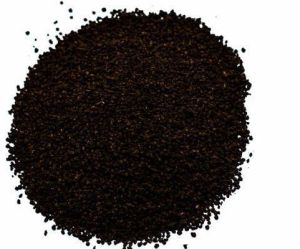
CTC BOP Tea
100 Kilogram (MOQ)
What is Tea? Tea is an aromatic beverage prepared by pouring hot or boiling water over cured or fresh leaves of Camellia sinensis, an evergreen shrub. Tea is also rarely made from the leaves of Camellia taliensis. After plain water, tea is the most widely many different types of tea; some have a cooling, slightly bitter, and astringent flavor, while others have vastly different profiles that include sweet, nutty, floral, or grassy notes. Tea has a stimulating effect in humans primarily due to its caffeine content. Varieties Basically, tea segments which are globally demanded and exported by us arecategorized as CTC, Orthodox and Green Tea. We have briefed upon each category in the brochure ahead. CTC Tea CTC Tea is processed using the "crush, tear and curl" (CTC) method. Leaves processed using the CTC method are not rolled, but are placed through cylindrical rollers with small teeth. The rollers crush, tear and curl the tea leaves, hence the name of the method. CTC tea was developed during the Second World War to increase the weight of tea that can be packed into a bag or sack. With the popularity of tea bags, this method has also grown in popularity. Tea processed using CTC ten ds to brew faster and yields more cups of tea per kilogram. The brewed tea often tends towards a red color. Preparation of CTC Tea When preparing CTC Tea, one teaspoon should be used per 6 oz. cup. The water should be boiled thoroughly before being poured, and the tea should be allowed to brew for 3-4 minutes & milk. Processing of CTC Tea After the harvest, the tea leaves are first withered by blowing air on them. Then black teas are processed in either of two ways, CTC (Crush, Tear, Curl). This method is efficient and effective for producing a better quality product from medium and lower quality leaves. Next, the leaves are oxidized under controlled temperature and humidity. (This process is also called "fermentation", which is a misnomer since no actual fermentation takes place.) The level of oxidation determines the quality of the tea. Since oxidation begins at the rolling stage itself, the time between these stages is also a crucial factor in the quality of the tea. Then the leaves are dried to arrest the oxidation process. Finally, the tea leaves are sorted into grades according to their sizes (leaf, brokens, fannings and dust), usually with the use of sieves. The tea could be further sub-graded according to other criteria. The CTC tea is ready for packaging.
Cultivation Type : Common
Color : Black
Grade : BOP
Feature : Strong Aroma, Pure Organic, Non Harmful, Good Taste
Packaging Type : Plastic Bag
Packaging Size : 25kg and 50kg
Type : Ctc Tea
Country of Origin : India
...moreOpening Hours
Established in 1963, in Siliguri, West Bengal, India, RB Trade Wings Pvt Ltd has been a remarkable Manufacturer and Exporter in the CTC & Orthodox tea and salt powder markets. Since then, our goal has been to combine and balance the ideal flavour to the delight of our clients worldwide.
About Us
As the #1 manufacturer, maintaining our particular flavour, fragrance, and strength in the necessary proportions is always our first focus. Aahar Kranti Iodized, Shashi X-tra Iodized, Shahi Iodized Cooking, Shahi Baba Iodized, Rock, Rahi Extra White Iodised, Kranti Iodized & Gold, Edible & Edible Refine, Capsule, and Black are just a few of the iodized salt powders we provide.
By carefully choosing the leaves from the numerous tea plantations and gardens, we preserve quality. Every plant varies from one place to the next. Therefore, we exercise extreme caution, yet we do so while being watched over and directed by our owner, Mr Adarsh Chaudhry. We provide several CTC and Orthodox blends when catering.
Our company was established to make our customers happy, and we have flawlessly maintained our consistent supply of CTC and Orthodox tea. We efficiently provide excellent products in the necessary quantity. We constantly work with the best materials available, and orders are always delivered on time. Currently, we provide service to people in Bangladesh, Bhutan, Nepal, and India.